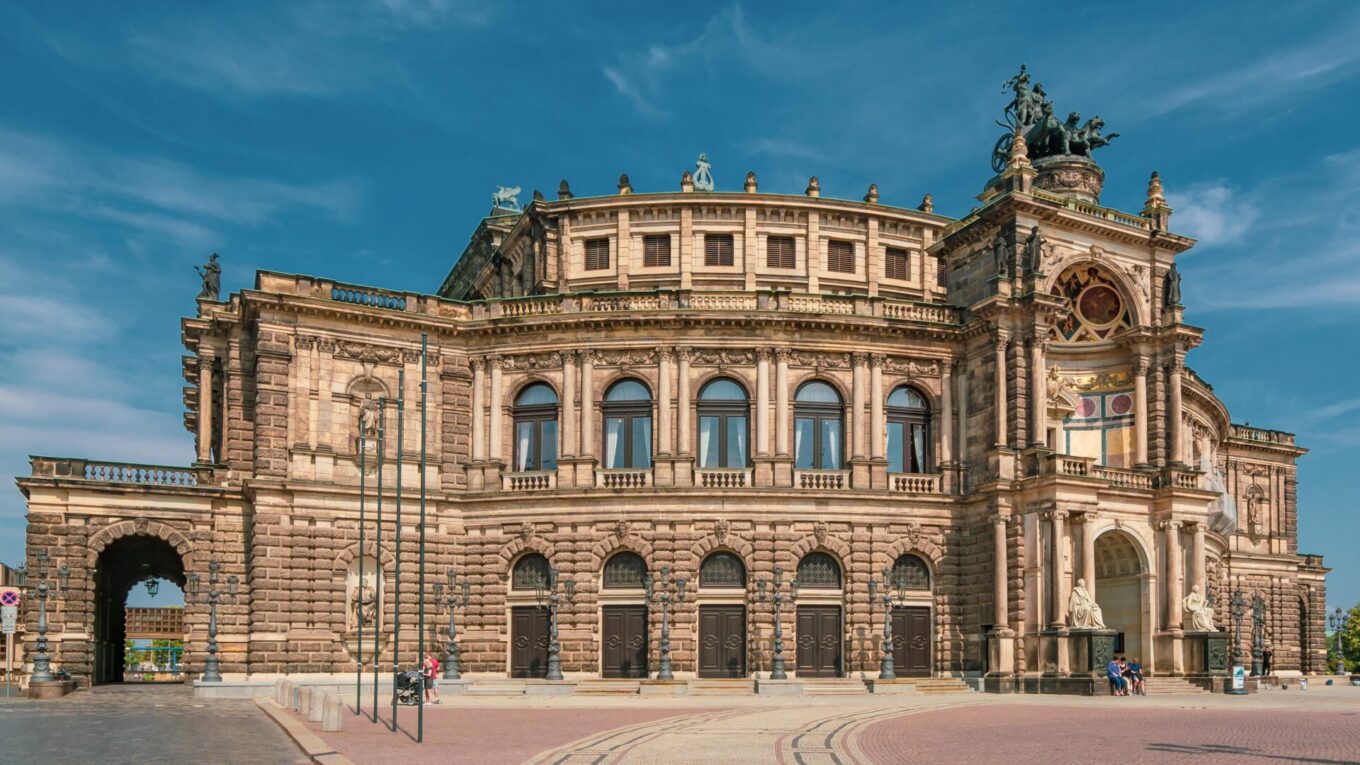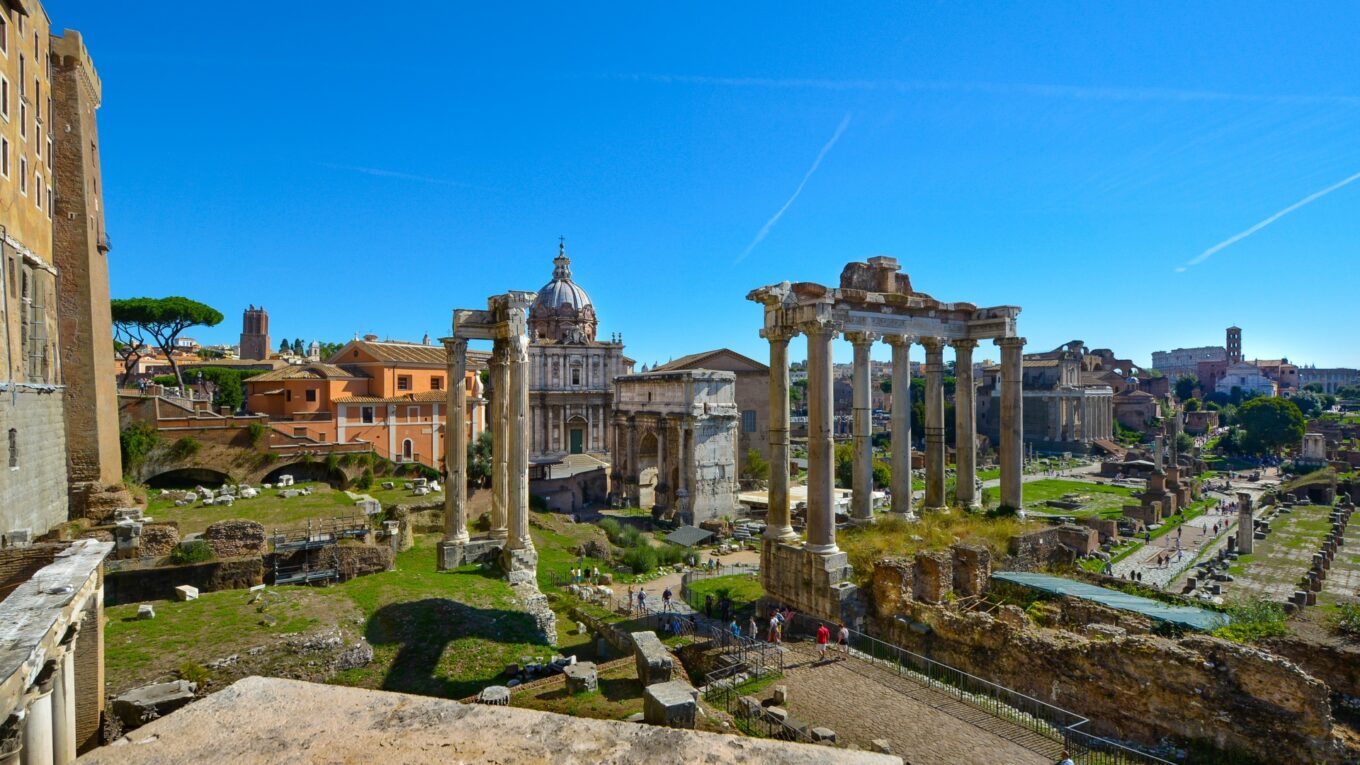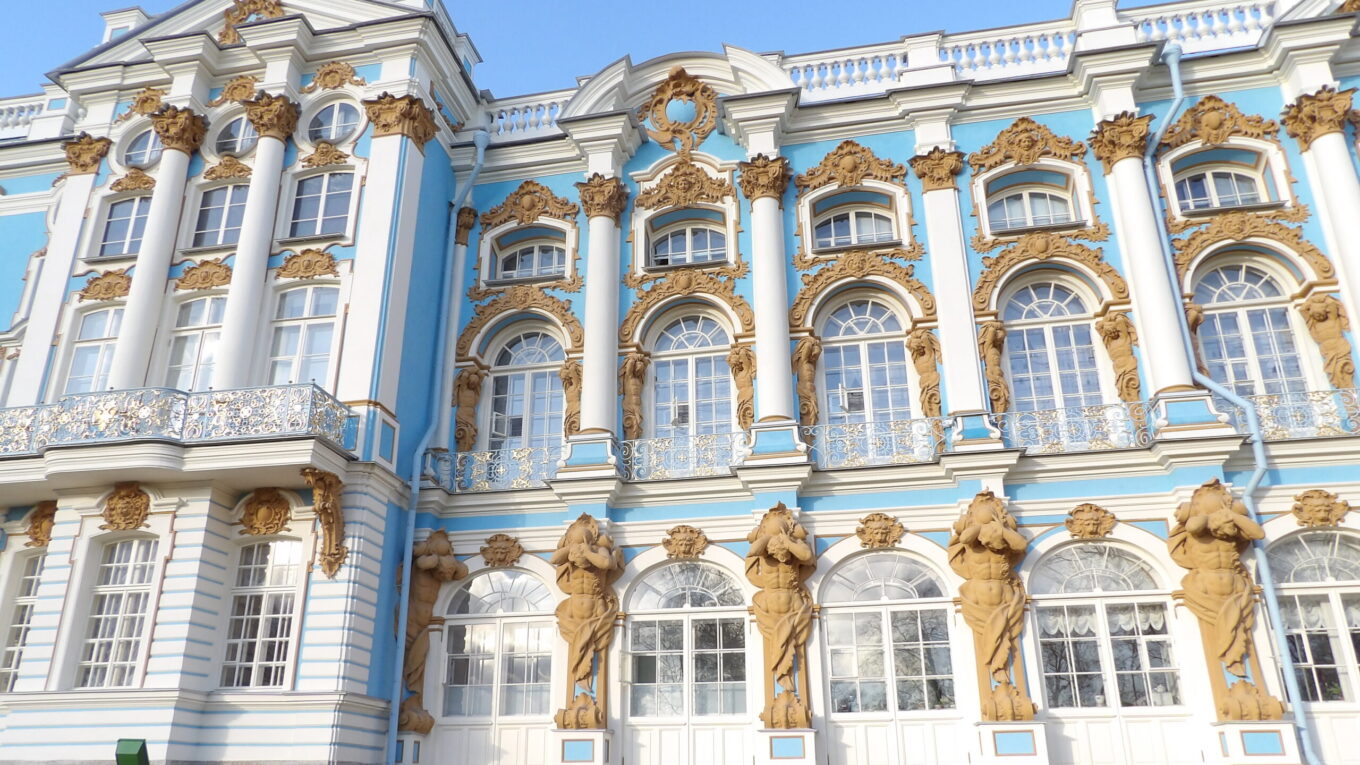Top 14 Plazas in Spain
Plazas in Spain are an important part of the culture and lifestyle of Spanish communities. Spain itself is an incredibly eclectic and historic country. Its architecture has been shaped over centuries, by a host of different factions and rulers. The Romans, Visigoths, Moors, Habsburgs, and the Spaniards themselves have all left their mark on Spain’s magnificent cities. No Spanish city would be complete without a main public square or Plaza.
Why are there so many Plazas in Spain?
The biggest reason for this was a royal decree from the Spanish Monarchs, stating that every city needed to have a centralized gathering space. This article will show some of the greatest examples of the typical Spanish plaza; with a simple rectangular plan enclosed by repetitive building facades with rhythmic windows, balconies, and colonnade patterns, as well as various other public squares that break the mold of a typical Spanish Plaza.
1. Plaza de España, Seville

Photo by Francisco Colinet from Wikimedia Commons
The Plaza de España in Seville is one of the highlights of Spain’s southernmost region, Andalusia. It is one of the most beautiful Plazas in Spain and is known for its decorative features that are meant to showcase Spanish Culture. Plaza de España has a shorter history than most of the other Spanish plazas on this list since it was constructed only in 1928. The Plaza as well as the entire surrounding park was built for the Ibero-American Exposition, which was held in Seville in 1929.
2. Plaza Mayor, Madrid
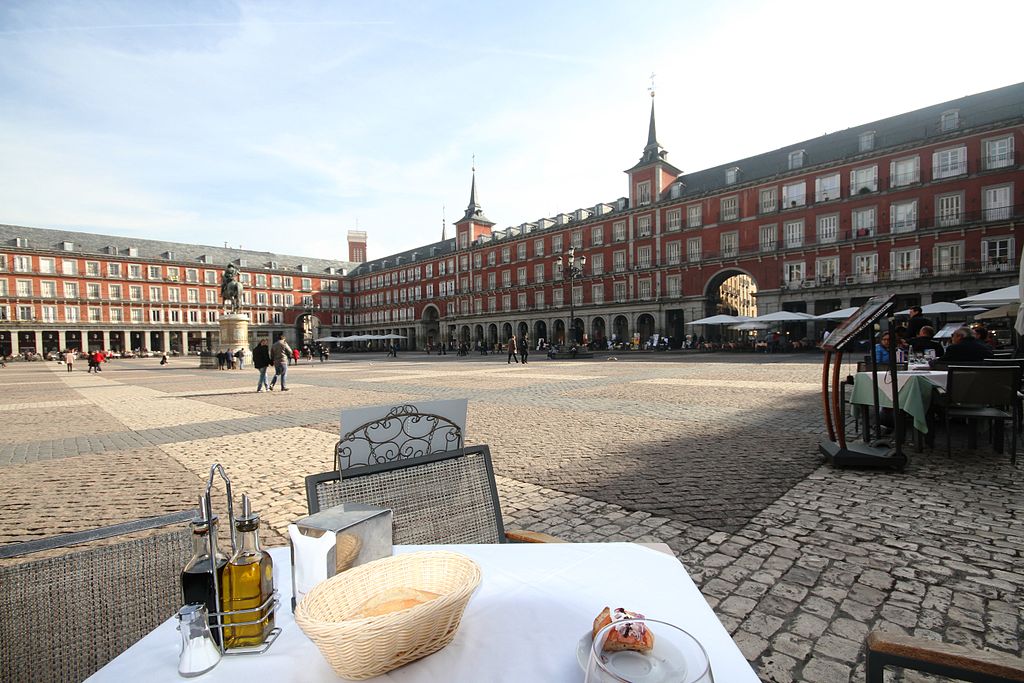
Photo by José Luiz from Wikimedia Commons
Madrid, Spain’s Capital, has a wide variety of squares and plazas. The grandest and most impressive of these is Plaza Mayor. Dating originally from 1580, and modified several times over the centuries, Plaza Mayor is one of the oldest squares in the city. It was damaged by several fires in its history, and the vast majority of the architecture that is seen today is from the 19th century. The square is one of the most popular spots in modern Madrid to get a drink or some food. The entire first floor of the plaza is filled with bars and restaurants which all have seating in and around the columns and arched vaults that surround the central open area.
3. Plaza Mayor, Salamanca

Photo by Muffinn from Wikimedia Commons
One of the most famous attractions in the Spanish city of Salamanca is Plaza Mayor. The square dates from the early 18th century. It is built in the architectural style that was in vogue at the time, Baroque. The central feature within the plaza, which is noticeably taller than the surrounding buildings, is the city hall. Nowadays in modern times, much like all the other squares on this list, Salamanca’s Plaza Mayor is filled with bars, restaurants, and other retailers which make the whole area a constant flurry of both locals and tourists.
4. Praza do Obradoiro, Santiago de Compostela

Photo by Pedro J Pacheco from Wikimedia Commons
The Praza do Obradoiro is the main plaza in Santiago de Compostela. The square is one of the most famous plazas in Spain because it is right next to Santiago de Compostela Cathedral. The church, which was constructed starting in 1075 CE, was known throughout the Middle Ages as an important pilgrimage church. People would travel from all over Europe to visit the cathedral. A massive, ornately decorated Baroque facade was added later on, which can be easily admired from within the Praza do Obradoiro.
5. Plaza de María Pita, A Coruña

Photo by Pedro J Pacheco from Wikimedia Commons
A Coruña is a city on Spain’s northern coast in the province of Galicia. María Pita, whom the square is named for, is arguably A Coruña’s most famous resident. She is often regarded as the savior of the city, for helping protect the locals during a battle in the 16th century. Today Plaza de María Pita showcases some very typical Galician architecture. On the northern side of the square, the magnificent City Hall of A Coruña towers over the ground below.
Like Architecture of Cities? Sign up for our mailing list to get updates on our latest articles and other information related to Architectural History.
6. Plaza del Pilar, Zaragoza
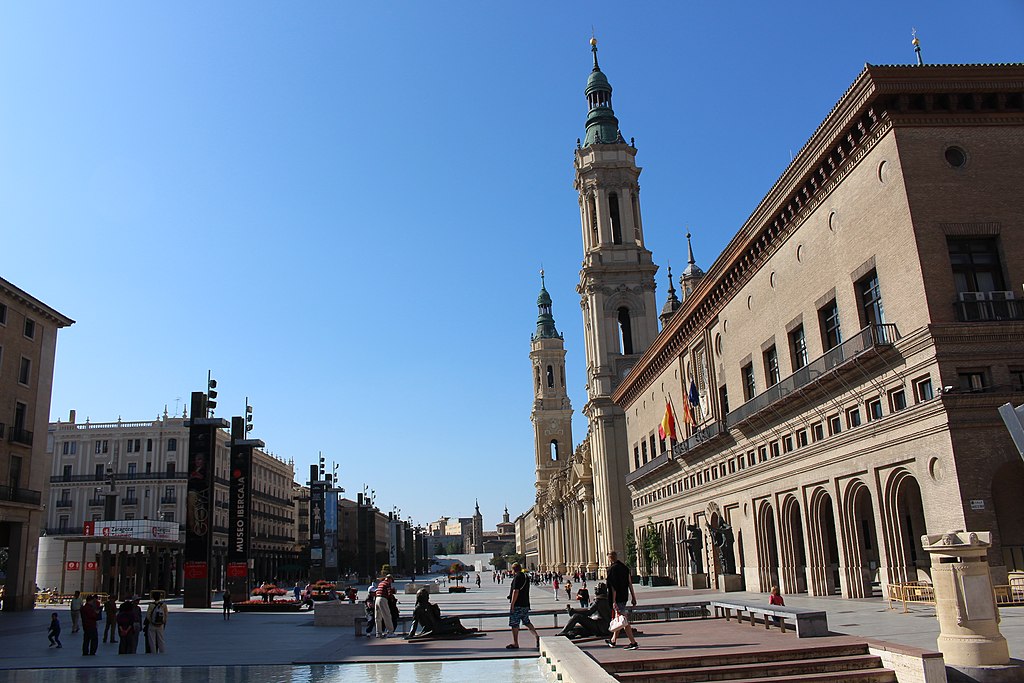
Photo by tiger rus from Wikimedia Commons
Zaragoza, the former capital of the Kingdom of Aragon, is home to another amazing Spanish Plaza. The Plaza del Pilar, more formally known as Plaza de Nuestra Señora del Pilar, is located right next to the Ebro River. The Plaza is fronted by many of Zaragoza’s most important buildings, including the Catedral del Salvador de Zaragoza and the Baroque Catedral-Basilica del Pilar. Plaza del Pilar is also known as the gateway to Zaragoza since it was the ending point of the city’s oldest medieval bridge, the Puente de Piedra.
7. Plaça Reial, Barcelona

Photo by Ramblasbacardi from Wikimedia Commons
Plaça Reial is one of the larger squares in Barcelona, although still tiny when compared to Plaça de Catalunya. The square is centrally located in Barcelona’s oldest neighborhood, the Gothic Quarter. Plaça Reial sees a lot of foot traffic due to its placement just off La Rambla. The building facades date from the 19th century, although the square itself is far older. Within the enclosed areas there is a central fountain, multiple palm trees, and some beautiful lamps that were designed by Catalonia’s most famous architect, Antoni Gauí.
8. Plaza Barria, Bilbao

Photo by Jose Mario Pires from Wikimedia Commons
Plaza Barria is located in the oldest part of Bilbao. Just upriver from the Guggenheim Museum, the old town of Bilbao has been occupied since the 14th century. Bilbao is located in the northern Spanish Basque Region. The name Plaza Barria is actually Basque for “The Neighborhood Plaza.” The buildings that surround the square today all date from the 19th century and are built in the Neoclassical Style.
9. Plaza Alta, Badajoz
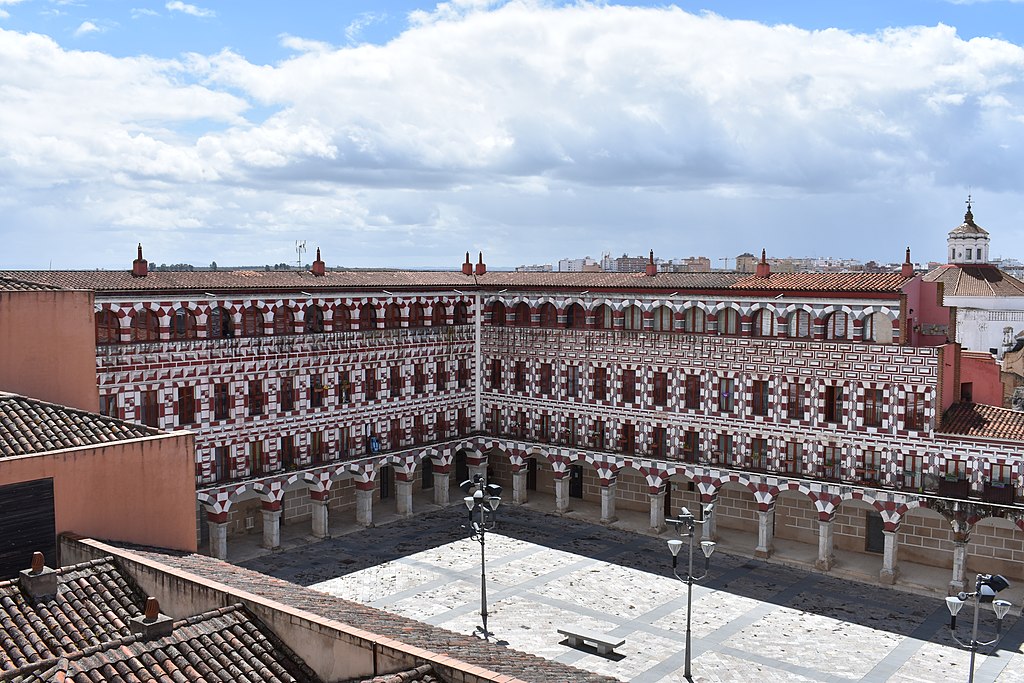
Photo by Stephen Colebourne from Wikimedia Commons
Although one of the smaller cities in Spain, Badajoz was an important center during the Islamic occupation of the Iberian Peninsula. The Moors built a large fortress on top of the city’s highest point. Directly beneath that fortress, you will find Plaza Alta. The architecture of the buildings is unique when compared to other plazas in Spain. The red, white, and grey stonework is unlike anything else in the country.

Interested in Islamic Architecture? Check out our article on the Moorish Architecture of Spain to learn more!
10. Plaza Mayor, Valladolid

Photo by Emilio J. Rodriguez Posada from Wikimedia Commons
This large open area in central Valladolid has been around since the 13th century. The buildings surrounding the plaza date from various periods in history, but most of the architecture is from the 17th & 18th centuries. The most notable building in the square is the city hall. The city hall has three towers; the central and tallest tower is decorated with a clock that can be viewed from anywhere in the area.
11. Plaza Mayor, Palma

Photo by José Luis Filpo Cabana from Wikimedia Commons
Palma da Mallorca is the capital city of the Balearic Islands. Although relatively unknown compared to the major sites in Palma, Plaza Mayor is another great example of a typical Spanish-style plaza. Plaza Mayor’s consistent yellow color paired with the rhythm of the building’s exteriors, creates a uniform symmetrical design. It is one of the city’s main spots for nightlife, and also periodically hosts a craft market.
12. Constitución Plaza, Donostia / San Sabastián

Photo by Pablo Theissen from Wikimedia Commons
Constitución Plaza is located in the middle of the city’s historic center, on a peninsula that juts out into the Bay of Biscay. It is located within walking distance of Donostia / San Sabastián’s main attractions, such as the town hall and the basilica. To the western side of the plaza, you can see the city’s largest public library.
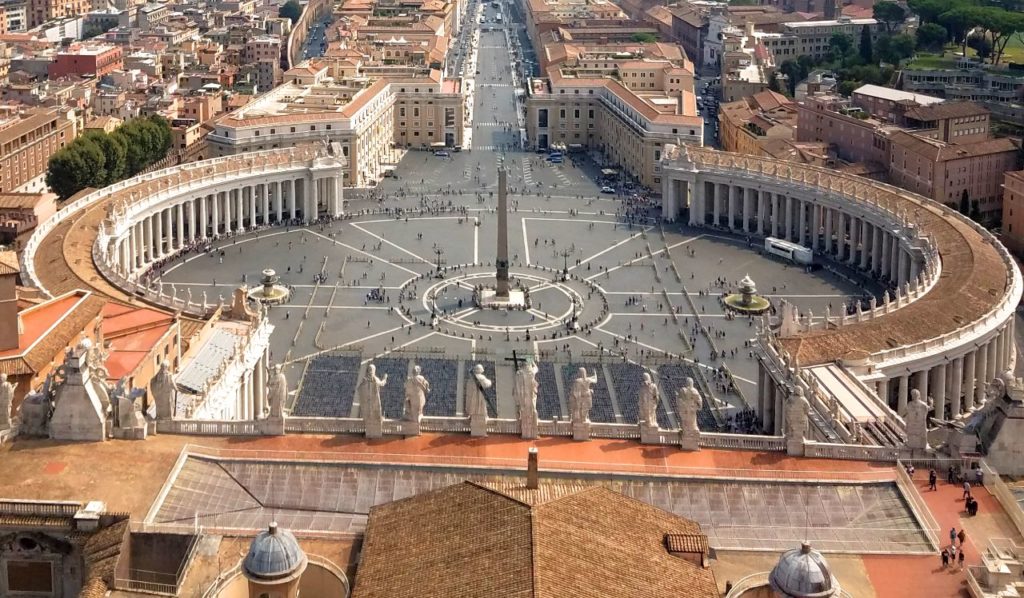
Like Spanish Plazas? Check out our article on Italian Piazzas to learn more about the public squares of Italy.
13. Plaza Mayor, León

Photo by Miguel Hermoso Cuesta from Wikimedia Commons
León’s Plaza Mayor is one of the highlights of the city. León, once the capital of the Kingdom of León, is a large city about two hours north of Madrid. Its main plaza is a frequent city gathering point. It follows the same architectural scheme as many others in Spain, with rhythmic buildings encircling a large open area. Today Plaza Mayor hosts many events such as concerts, markets, and festivals.
14. Plaza de la Corredera, Cordoba

Photo by Michael Bryan from Wikimedia Commons
Cordoba, a city in Spain’s southern region of Andalusia, has another grand square very similar to other Plazas in Spain. The concept of the design follows the standard style that you can see all over the country. The historic center of Cordoba is a typical medieval jumble of narrow, winding streets. So naturally, this square is one of the best open areas and gathering points in the entire area. Although not nearly as popular as the city’s most significant site The Mosque of Cordoba, Plaza de la Corredera is absolutely worth a visit for any traveler to the former Andalusian Capital.
What are the best plazas in Spain?
The plazas in this article are all among the most beautiful in Spain. They all share nearly identical functions, although they vary greatly in terms of their architectural styles. There are hundreds of different plazas in Spain, and this list was only able to capture a fraction of them. But overall, the plazas listed above are among the largest, most beautiful, and famous of all of Spain’s Plazas.
Throughout history, these open spaces have served as central meeting and gathering places within their respective cities. Most importantly, today they are hubs of activity, where anyone can sit down, relax, and enjoy that famous Spanish lifestyle.

- About the Author
- Rob Carney, the founder and lead writer for Architecture of Cities has been studying the history of architecture for over 15 years.
- He is an avid traveler and photographer, and he is passionate about buildings and building history.
- Rob has a B.S. and a Master’s degree in Architecture and has worked as an architect and engineer in the Boston area for 10 years.
Like Architecture of Cities? Sign up for our mailing list to get updates on our latest articles and other information related to Architectural History.
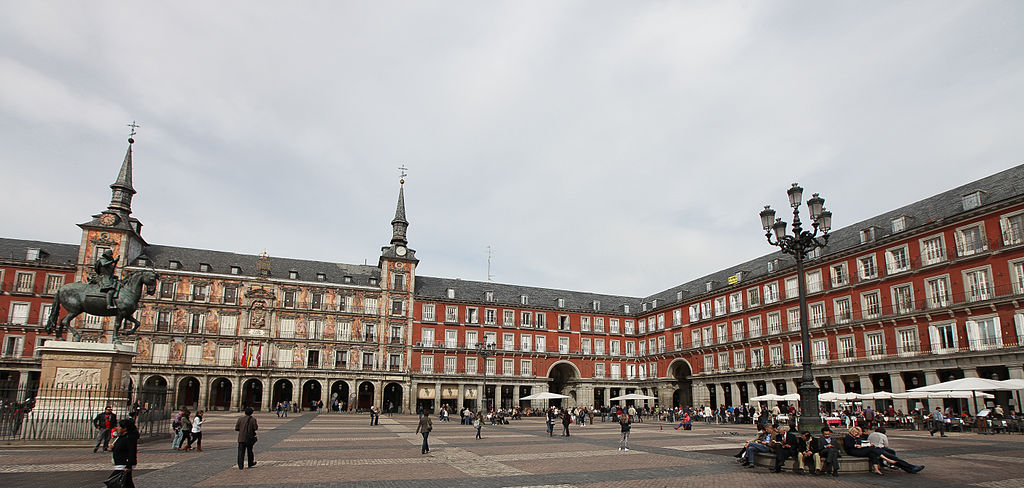
Photo by Rick Ligthelm from Wikimedia Commons



